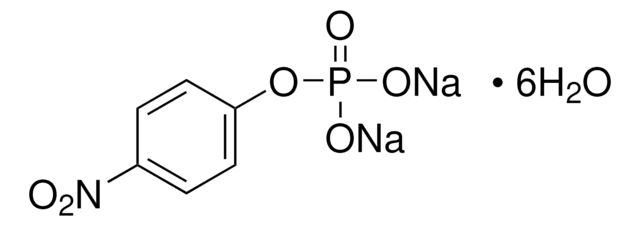8.03116
Diethanolamine
for synthesis
Synonym(s):
Diethanolamine, ß,ß′-Dihydroxydiethylamine, Bis-(ß-hydroxyethyl)-amine
About This Item
Recommended Products
vapor pressure
<0.01 hPa ( 25 °C)
Quality Level
assay
≥99% (GC)
form
solid
autoignition temp.
365-370 °C
potency
676 mg/kg LD50, oral (Rat)
8328 mg/kg LD50, skin (Rabbit)
expl. lim.
2.1-10.6 % (v/v)
pH
11 (20 °C, 53 g/L in H2O)
kinematic viscosity
357.2 cSt(30 °C)
bp
269-270 °C/1013 hPa
mp
28 °C
transition temp
flash point 176 °C
density
1.09 g/cm3 at 30 °C (liquid)
storage temp.
2-30°C
InChI
1S/C4H11NO2/c6-3-1-5-2-4-7/h5-7H,1-4H2
InChI key
ZBCBWPMODOFKDW-UHFFFAOYSA-N
Application
- Environmental Sensing: Diethanolamine was used in the development of a colorimetric sensor array for detecting and discriminating various analytes, showcasing its application in environmental monitoring and safety (Adampourezare et al., 2024).
- Shrimp Metabolism Research: The compound was part of a study exploring the impact of rearing environments on shrimp metabolism, helping to trace the origins and species of shrimps using specific metabolites, thus enhancing the understanding of aquatic life in food science (Ao et al., 2024).
- Novel Electrochemiluminescence Probes: Diethanolamine facilitated the creation of highly active coreactant-capped, water-stable 3D@2D core-shell perovskite quantum dots, serving as a powerful self-enhanced electrochemiluminescence probe for analytical chemistry applications (Sun et al., 2024).
Analysis Note
Melting range (lower value): ≥ 25 °C
Melting range (upper value): ≤ 29 °C
Water (K. F.): ≤ 0.30 %
Identity (IR): passes test
Due to its specific melting range the product may be solid, liquid, a solidified melt or a supercooled melt.
signalword
Danger
Hazard Classifications
Acute Tox. 4 Oral - Eye Dam. 1 - Repr. 2 - Skin Irrit. 2 - STOT RE 2 Oral
Storage Class
11 - Combustible Solids
wgk_germany
WGK 2
flash_point_f
280.4 °F - closed cup
flash_point_c
138 °C - closed cup
Certificates of Analysis (COA)
Search for Certificates of Analysis (COA) by entering the products Lot/Batch Number. Lot and Batch Numbers can be found on a product’s label following the words ‘Lot’ or ‘Batch’.
Already Own This Product?
Find documentation for the products that you have recently purchased in the Document Library.
Customers Also Viewed
Our team of scientists has experience in all areas of research including Life Science, Material Science, Chemical Synthesis, Chromatography, Analytical and many others.
Contact Technical Service










